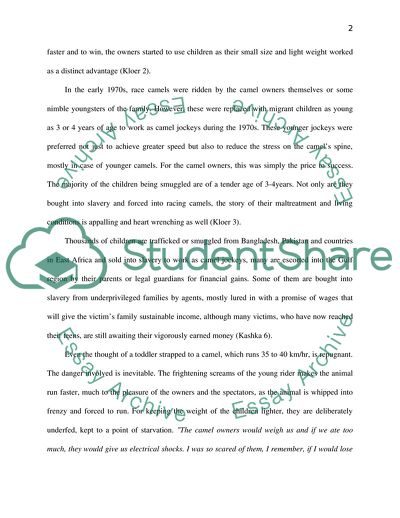Cite this document
(Child Camel Jockeys Research Paper Example | Topics and Well Written Essays - 2250 words, n.d.)
Child Camel Jockeys Research Paper Example | Topics and Well Written Essays - 2250 words. https://studentshare.org/social-science/1780181-child-camel-jockeys
Child Camel Jockeys Research Paper Example | Topics and Well Written Essays - 2250 words. https://studentshare.org/social-science/1780181-child-camel-jockeys
(Child Camel Jockeys Research Paper Example | Topics and Well Written Essays - 2250 Words)
Child Camel Jockeys Research Paper Example | Topics and Well Written Essays - 2250 Words. https://studentshare.org/social-science/1780181-child-camel-jockeys.
Child Camel Jockeys Research Paper Example | Topics and Well Written Essays - 2250 Words. https://studentshare.org/social-science/1780181-child-camel-jockeys.
“Child Camel Jockeys Research Paper Example | Topics and Well Written Essays - 2250 Words”. https://studentshare.org/social-science/1780181-child-camel-jockeys.


